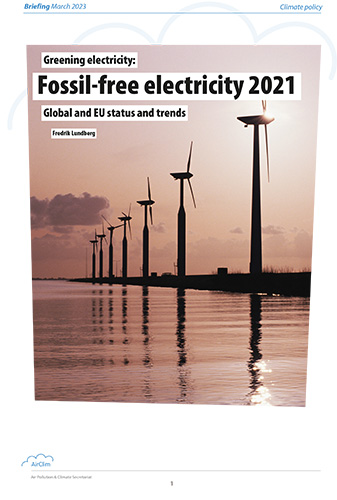

Lives could be saved if more people commuted by bike to work. Photo: © Ljupco Smokovski – Fotolia.com
Massive health gains with more cyclists
If everybody who takes their car to work in Stockholm County and has less than a 30-minute bike ride to work, cycled to work instead, the number of cars in rush hour traffic would be around 111,000 fewer.
This would mean significantly reduced emissions from traffic and lead to significant health benefits for the population. The research, which was recently published in Science of the Total Environment, shows that this could mean a reduction of 60 premature deaths per year for the population of the county, corresponding to 450 saved years of life. This is about twice as high as the calculated health gain due to reduced air pollution emissions when the congestion tax was introduced in Stockholm.
With the help of detailed data on individuals’ car ownership, age, gender, home address, workplace and shortest cycle route between home and work, the researchers were able to calculate how many people could cycle to work within 30 minutes depending on their expected physical capacity. Knowing the distribution and number of cars, lorries and buses on all roads, speeds, as well as the composition of the car fleet and how many cars are freed up per kilometre, the total emissions were calculated for the current situation and for the 30-minute scenario, which involves 111,000 fewer cars. The change in exposure to air pollution for the population and commuters was then calculated using meteorological air pollution dispersion models. The health effects were then estimated based on the so-called exposure-response relationship, which in turn is based on epidemiological studies published in scientific literature.
This is the first in a series of publications from this project on the effects of increased cycling. The study also includes the positive health effects of increased physical activity among new cyclists, altered pollutant exposure for commuters, as well as the effect on the number of people injured in traffic. What makes this study unique in comparison with other previously published studies is that the physical capacity of the commuters, the distance between home and work, the traffic situation, emissions, etc., could be examined in considerably higher detail than other studies, which are often based on very simplified assumptions that a certain percentage will take up bicycle commuting regardless of the basic conditions. Similarly, the exposure response is used, which reflects more accurately the effects of local emissions than in previous studies.
Source: Impacts on air pollution and health by changing commuting from car to bicycle http://www.sciencedirect.com/science/article/pii/S0048969717301559

 Download this issue
Download this issue























